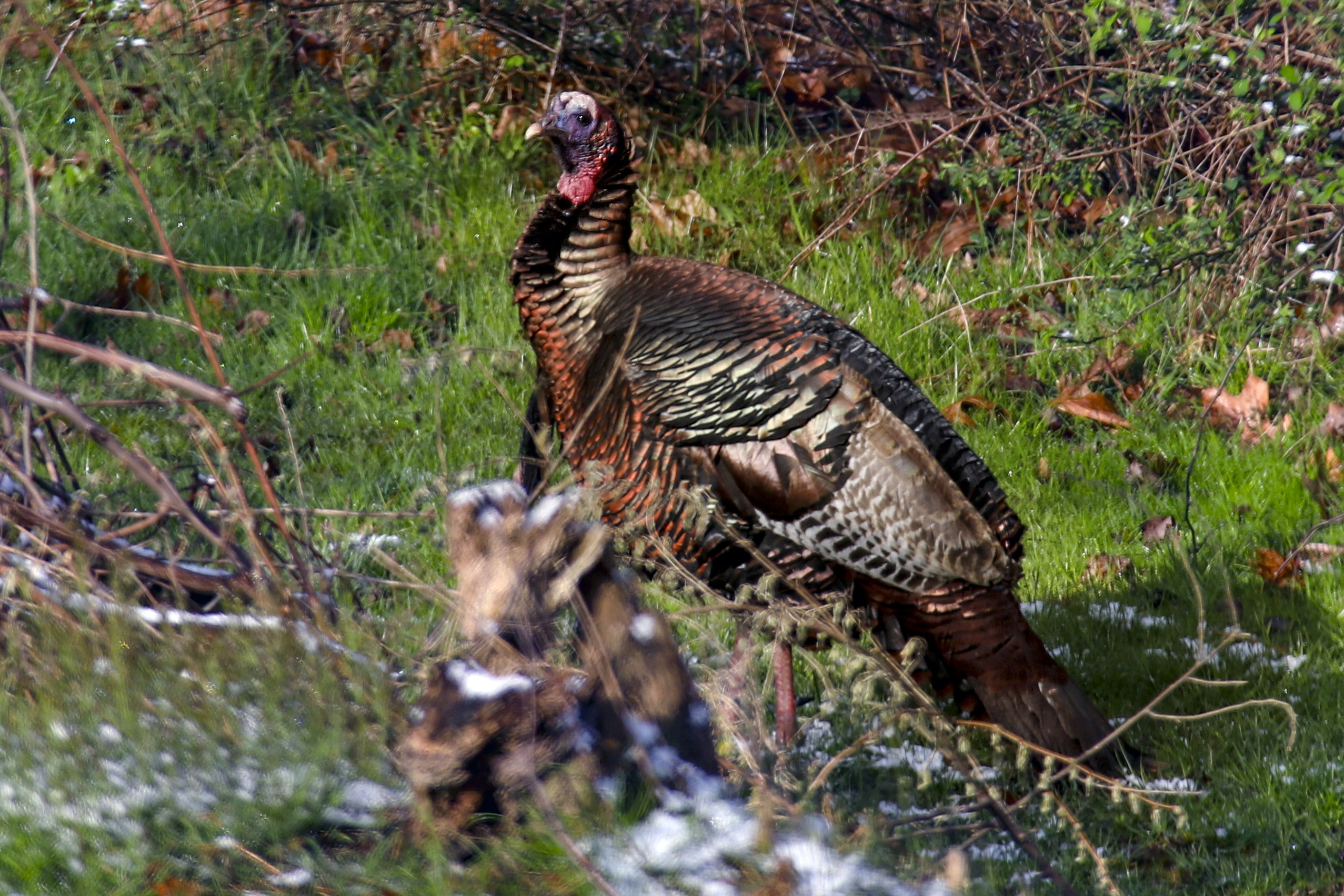A few weeks ago a friend of mine told me he’d seen bluebirds by his bird feeder and wondered how unusual that was for this time of year. I told him that it was unusual, but bluebirds can be found in our area in the winter, as long as we don’t have deep snows and extended periods of really cold weather. Studies show that some robins also stay during winter. I’ve seen them in wooded areas and watched one picking at old grapes left on forest grapevines. I’m not sure where they go in weeks like we just had, but once the snow melts (if ever) you’ll see a few around.
So far our Morgantown winter hasn’t been that bad relative to very cold temperatures and deep snow. So, relative to our wildlife, things haven’t been terrible. Nasty yes. Terrible no. I say that because the realities of winter really come to bear on our wildlife when temperatures drop and the snow gets deep.
Deer normally lose about 30% of their body weight over winter. But with deep, early, crusted snows, and extended periods of very cold weather, unless fed, deer could starve later in the winter. We rarely get such weather, so feeding deer is usually not necessary. What to feed deer is an issue because the bacteria in the stomach that aid digestion are not present when fed hay or corn. After a few weeks on a hay or corn diet deer can develop such bacteria, but in the meantime, they will continue to lose weight even though their stomachs are full.
Feeding deer in winter is a mixed bag for many people. Some say that there are too many deer so we should let nature run its course. Others say that feeding deer in the rare years when we have extreme conditions is worth doing. My response is to let the state wildlife agency make such decisions. They are trained and it’s their job.
In our area, when we get really cold weather and lots of snow, you will find deer on south-facing slopes, where temperatures are a bit higher. If it’s windy, they’ll head for thick cover, and bed down. Deer die-offs from bad weather are rather rare in West Virginia simply because our winters are not usually that bad. One can find dead deer in winter, but those animals are usually ones with injuries or very old deer.
Wild turkeys utilize several adaptations to make it through bad winters. When snows get deep, turkeys go to water sources that haven’t frozen and feed along the edge. Spring seeps in our hardwood forests are critical for turkeys in winter. Our winter has to be really bad to freeze spring seeps, and turkeys go there to feed on salamanders, tubers, aquatic insects, etc. Another adaptation involves roosting. Normally turkeys roost in hardwood trees on ridge tops. But when temperatures go below zero for 5-10 straight days, turkeys move to roosts in hemlocks and other conifers where they get more protection from the wind. When below zero they won’t leave the roost until the weather warms up a bit. Apparently, birds can survive on roosts for a week, but after that, we’ll lose turkeys. That’s the bad news. The good news is that in this area we rarely get a week of temperatures below zero.
Rabbits remain fairly stationary during deep snows, but they do move along the surface of the snow and eat bark from certain species of trees. You can see remnants of this in the spring along our interstate highway right-of-ways, where rabbits have eaten bark from sumac. Once all snow melts, you can sometimes see bark stripped from small sumac, 1-3 feet above the ground. It’s not the best food for rabbits, but it gets them through the bad times.
Gray squirrels don’t hibernate in winter, but they do lay low. When it is cold, with deep snows, squirrels stay in holes in trees. When temperature and snows allow, they’ll leave the trees to dig up the acorns they stored underground in the fall. Thus, mast is extremely important relative to squirrels making it through the winter.
Ruffed grouse love aspen buds, but we have little of that in our area. Thus, they consume catkins, buds, berries, from a variety of other species. When we get deep snows and very cold weather, they dive into the snow and roost there. That’s rare in West Virginia, but I know of two winters in the late 70s when birds could be found in snow roosts. On really cold days, grouse will simply hole up on the surface of the snow. They won’t stay there for more than one day, but the inactivity helps get the birds through bad times.
A warm winter day is a blessing for wildlife for it is one less day that they need to fight to survive before spring arrives. So far this winter has been tough at times, but no below-zero cold days. The good news is that warmer days are ahead… some time.




